Characteristics and symptoms
P. liobae is a sac (ascomycete) fungus that occurs on the leaves of the common beech (Fagus sylvatica). The infection leads to the development of conspicuous leaf browning in the form of irregularly shaped patches of dead tissue, so-called necroses, with dark brown edges (Fig. 1).

Fig. 1 - Infected leaves with the necrotic spots of irregular size and shape typical of P. liobae. Photo: Ludwig Beenken (WSL)
From summer to autumn, small white diaspores appear on these patches, serving the asexual dispersal of seeds. At around 150 μm in diameter, these are clearly visible to the naked eye. If you look at them under a magnifying glass (Fig. 2) or microscope, they appear as short-stalked spheres with long hairs.
During winter and spring, the sexual fruiting bodies form on fallen leaves in the leaf litter (Fig. 3). These lenticular, dark brown or black fruiting bodies are around 0.2 mm in diameter and often have a sunken centre. Infested leaves are often found in the lower canopy or on young trees in the undergrowth.
Biology, reproduction and dissemination
In spring, the blackish brown sexual fruiting bodies of the fungus mature on the dead leaves from the previous year (Fig. 3). They release their spores from April to May – just at the time when the new leaves of the beech are also emerging. The spores are spread through the air, leading to the initial infection of the young leaves. The presence of the fruiting bodies in the litter explains why it is mainly the lower canopy and young beech trees that are colonised.
Brown spots develop on the living leaves infected by the fungus. The small white diaspores (Fig. 2) eventually appear on these, developing between June and October. These asexually formed diaspores serve – as do the sexual spores – to propagate the fungus and lead to secondary infections of the beech leaves. The initial infection of the leaves is favoured by wet spring days; wet summers in turn lead to increased secondary infections.
The fungus has now been found throughout Switzerland, in southern and central Germany, in Austria, Slovakia and Slovenia, and in the French Pyrenees. There is no evidence confirming its presence in northern and southern Europe as yet.
Ecology
The fungus prefers the common beech (Fagus sylvatica) as host, but in the Botanical Garden in Munich it has also been found on the oriental beech (F. orientalis), which some botanists consider to be a subspecies of the common beech. The natural range of the oriental beech lies south-east of the range of the European beech (Fig. 4). In Slovenia, many hornbeams (Carpinus betulus) growing next to infected common beech trees also showed signs of diseased leaves. In trials, sessile oaks (Quercus petraea) and sweet chestnuts (Castanea sativa) also became diseased.
Infection mainly affects young beech trees in the understorey and low-hanging beech branches on shady, humid sites. Trees on sunny and sparse, light sites seem to be infected less frequently. In the course of infection trials it was shown that, because they have thicker cell walls, sun-exposed leaves of the common beech are more resistant to fungal infection than the softer leaves hanging in the shade. However, this protective effect is lost again by sun-exposed leaves it they are damaged mechanically or by insect herbivores such as the beech leaf-miner beetle (Orchestes fagi).
History of its spread and risks
Due to a lack of monitoring in many European countries, the origin and actual dissemination of this fungus is unknown. Having first been discovered near Zurich in Switzerland in 2008, it was then also found in Germany and Austria in 2016, in Slovakia and the French Pyrenees in 2017, and in Slovenia in 2018. Field observations show that P. liobae is widespread in the respective countries and often infests many trees where it occurs.
As the common beech has a large distribution area in Europe, it can be assumed that the same is also true for the fungus. The evidence collected over a short period certainly suggests that it is more widespread than previously known. On the other hand, it could not be detected in some countries, e.g. Poland or the UK, despite a targeted search. P. liobae could thus still be in the course of spreading.
Under normal climatic conditions, trees do not seem to be unduly adversely affected by P. liobae infestation. Nevertheless, it has been observed that the colonisation rate of beech trees by the fungus was significantly higher in the summer of 2016 than in the following year, something which may have been due to the wet spring of 2016. The subsequently observed early defoliation of these beech trees could therefore have been caused by the heavy infestation with the fungus. As young trees in the understorey are particularly affected, P. liobae could conceivably also be considered to have a negative impact on the natural regeneration of beech trees.
Control measures
Given the limited knowledge about this species and its distribution, it is quite difficult to keep under control. The use of chemical treatments in the forest is prohibited in Switzerland! It is not advisable to fell infested trees, as there may still be infectious leaves in the litter. However, it is advisable to monitor and record the occurrence of this parasite to determine its actual distribution and impact on beech populations.
Where do I report it, and where can I ask for advice?
For a better understanding of the distribution and dispersal dynamics of this species, any findings reported are very valuable. Please report your finds to SwissFungi, the national data and information centre for Swiss fungi. In the case of severely infected stands, the Swiss Forest Protection Group should be contacted.
Translation: Tessa Feller

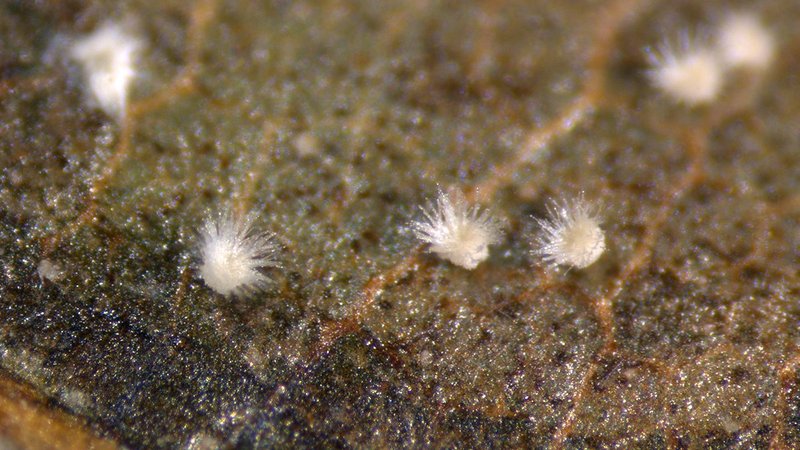
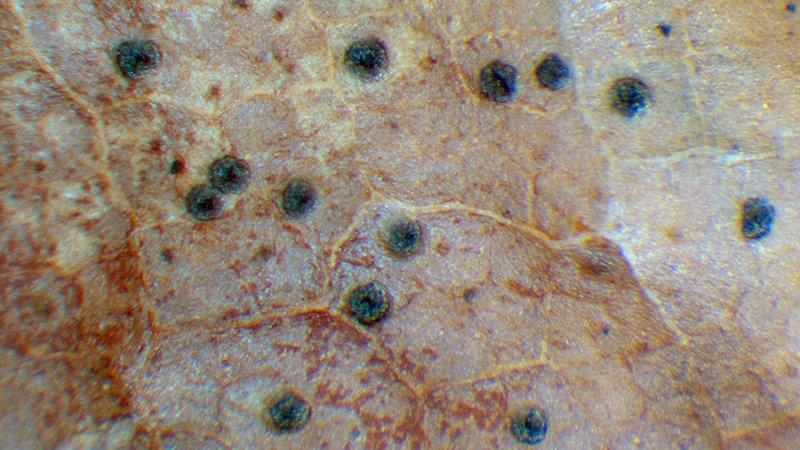
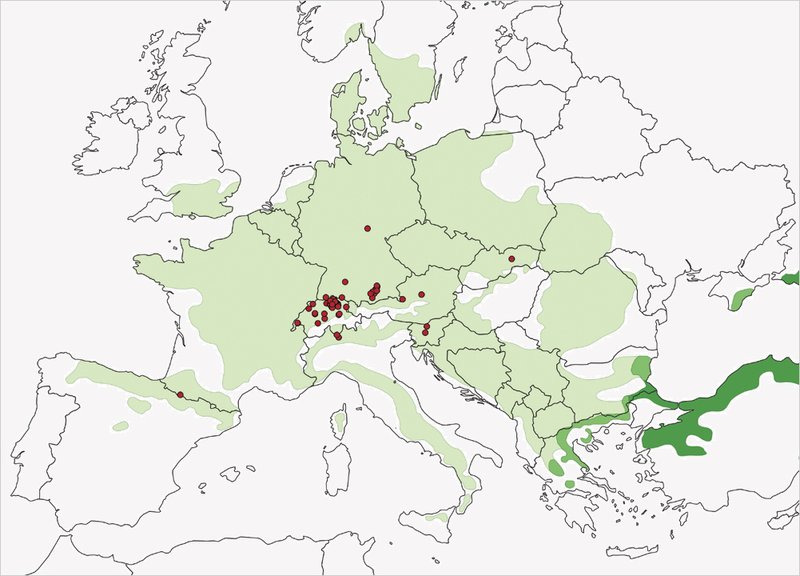
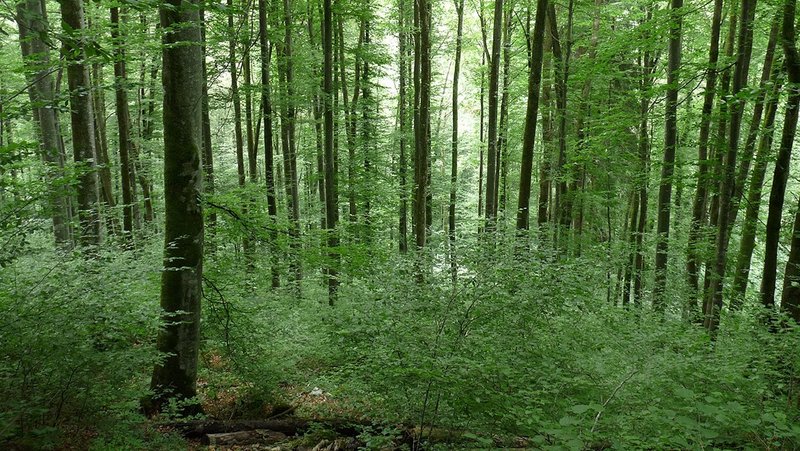
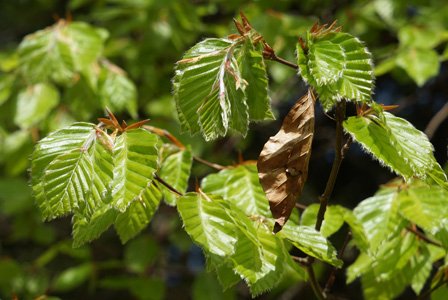
![[Translate to English:] Beech branch with beechnuts](/files/_processed_/e/8/csm_bfw_buchecker_d4b0e1c000.jpg)